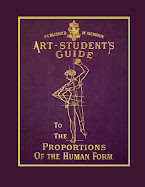

From
The Proportions of the Human Figure, According to a New Canon, for Practical Use ... By
William Wetmore Story
, American Sculptor. A printed copy is available at Amazon.com:
The Proportions Of The Human Figure: According To A New Canon, For Practical Use (1864)
"Other methods of proportion have been suggested, and argued with elaboration and ingenuity, which differ essentially from these arbitrary schemes of measurement, and are scientific and geometric in character. Among these may be mentioned the systems of Carl Schmidt,
C. G. Carus
,
A. Zeising (another reference to Zeising in Proportion: science, philosophy, architecture By Richard Padovan), D. E. Hay, and
John Gibson."
"Mr. Schmidt proposes a scheme founded upon the skeleton. He draws a line, a b, from the bottom of the spine (os cocygis) to the top of the spine, where it joins the skull. This he divides into four parts, the first of which establishes the navel, (#) the second, the top of the ribs; the third, the middle point of the sternum (z); the fourth, the end of neck where it joins the skull (a).
Upon this line a b he constructs his proportions in this wise ;—through the third point {z) he draws a horizontal line (c d) equal to | a b, intersected by a b into two equal parts (c d), showing the os humerus. At the base of the line a b he draws another horizontal line (e f) — \ a b, and divided thereby into two equal parts, and showing the thigh heads. He then draws diagonal lines from the opposite points of c d and e f, so as to cross each other
From c and d above he draws two lines diagonally crossing at a, the fourth division of a b, extending it beyond that half its length, and of this surplus making a diamond or square, set edgeways on the top of a, and this is the head of the figure.
He then draws a line (z g) parallel to a c; and from the point g, representing the nipple, draws one line to e (the right hip) and one to / (the left hip). This first line is the length from the hip to the knee, and the second the length from the knee to the ankle.
From c he then draws a line to h (the left nipple), and this is the length of the upper arm to the elbow ; from g to x (i. e., from the nipple to the navel) he again draws a line, and this is the measure of the fore-arm to the wrist, and x e=hand.
The accompanying diagram will give a clearer notion of this system than any explanation."


This was the method used by Joseph Meyer's in his encyclopedia
Meyers Konversations-Lexikon.
Prof. Dr. Carl Heinrich Stratz used a nearly identical method of describing the proportions of the female in his 1911 book
Die Rassenschoenheit des Weibes
. Some examples from the b ook are at the Czech website:
Vzpřímené postavení.
He was "one of the first researchers in growth and development. After 1900 he became more and more engaged in observations of the child's development from the new-born to the adolescent. His publications, especially his graphs and pictures of morphological changes in the childs body and the signs of puberty, have the following years deeply influenced our knowledge on "orthology" within the medical problems of youth." -
H. Grimm, Arztl Jugendkd. 1979 Jun;70(3):177-92.
Read More



















